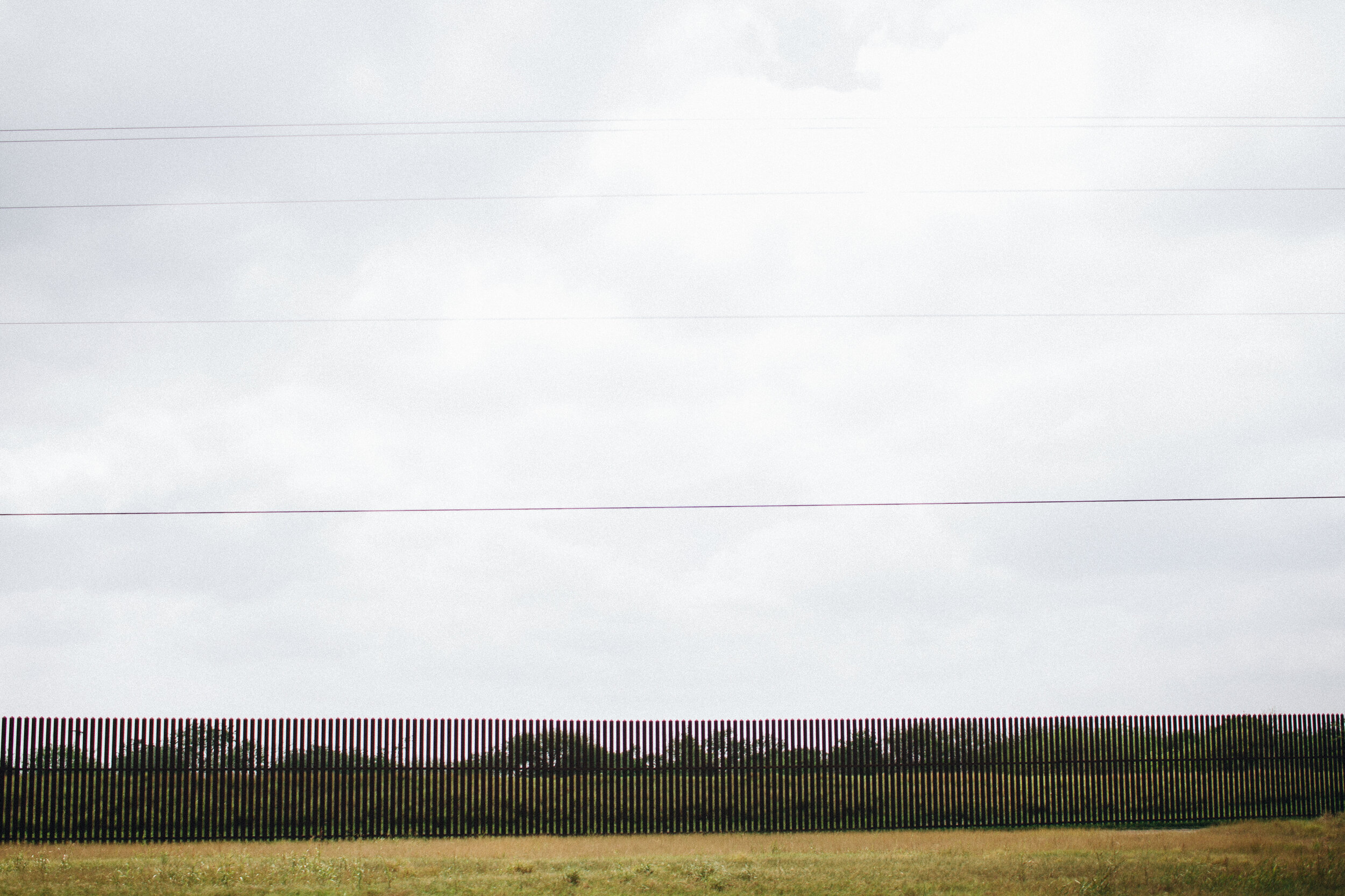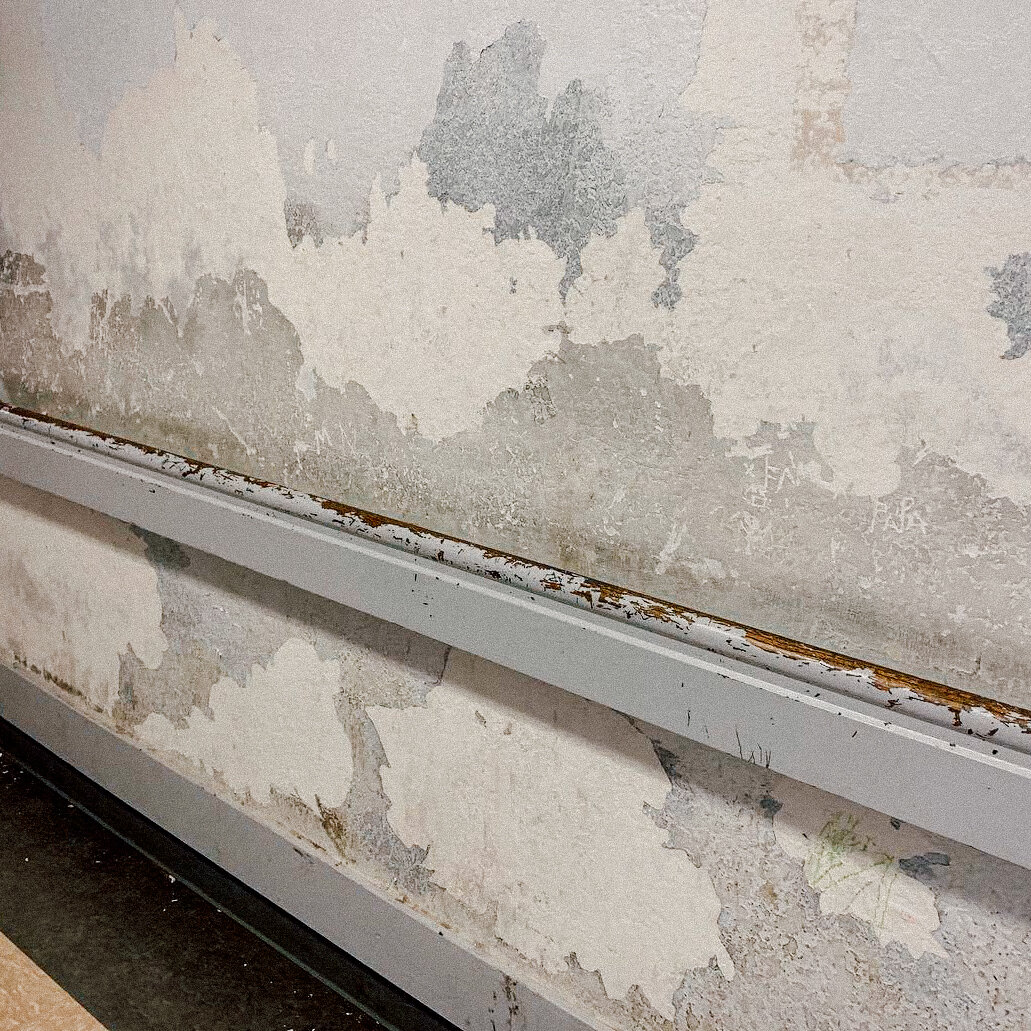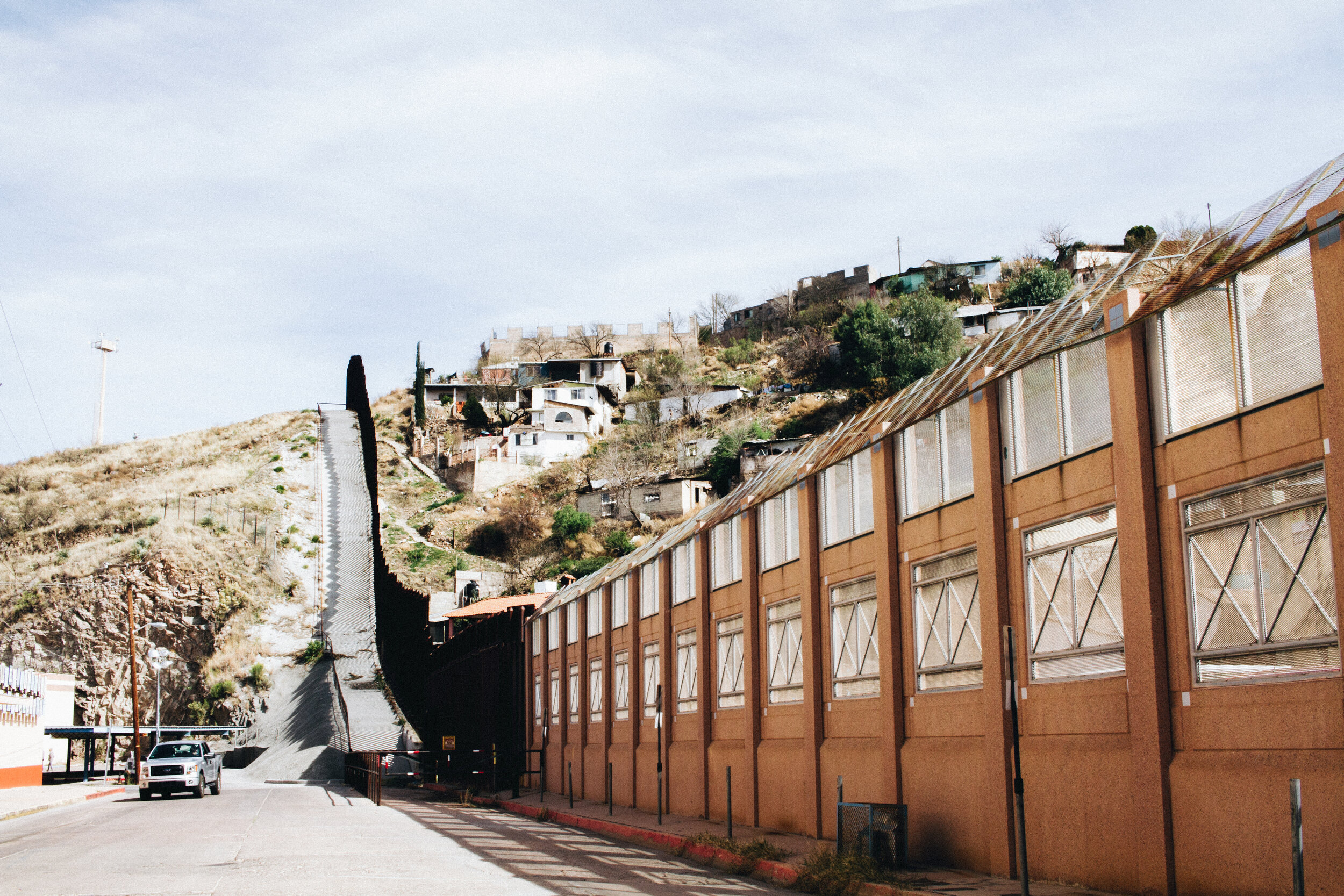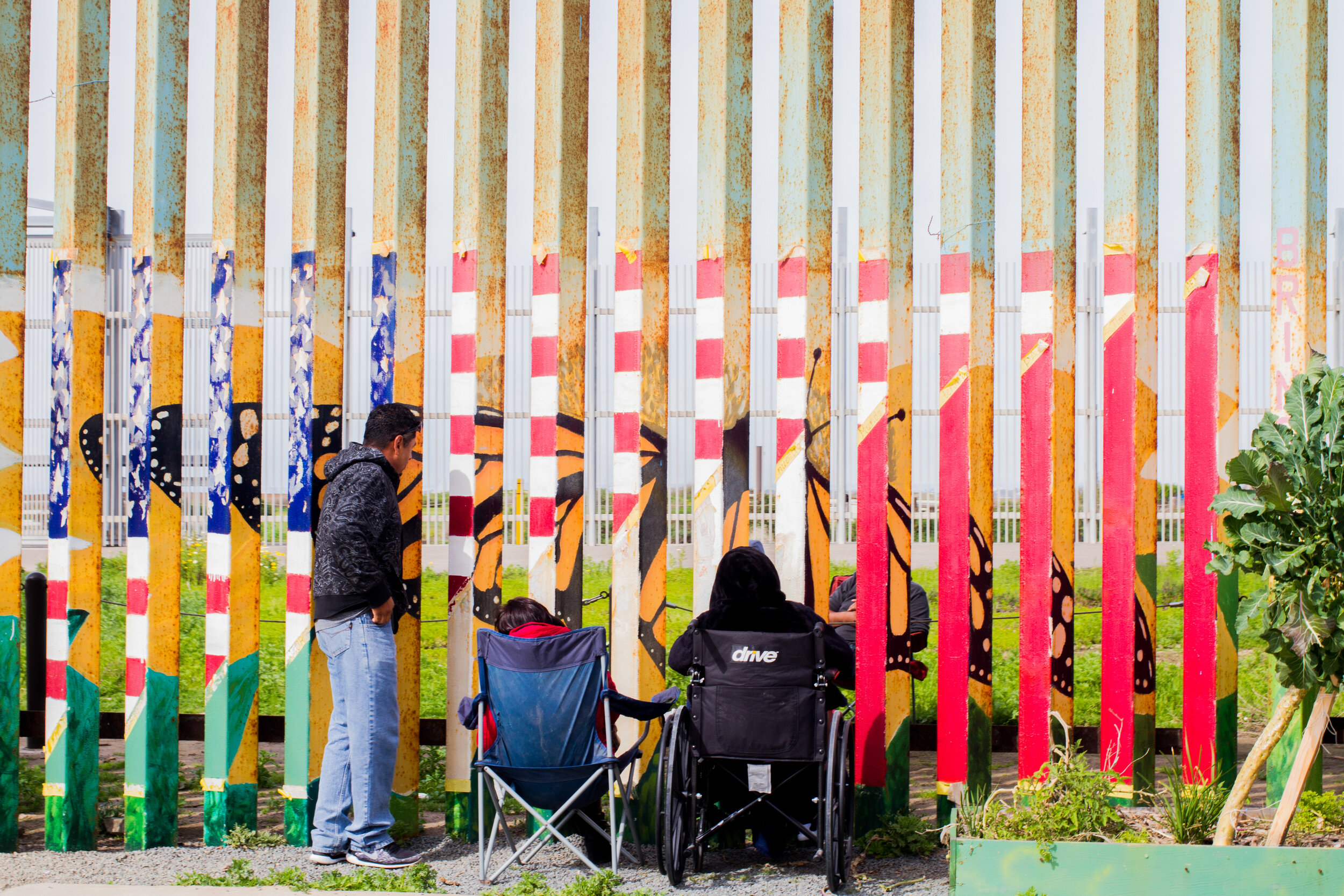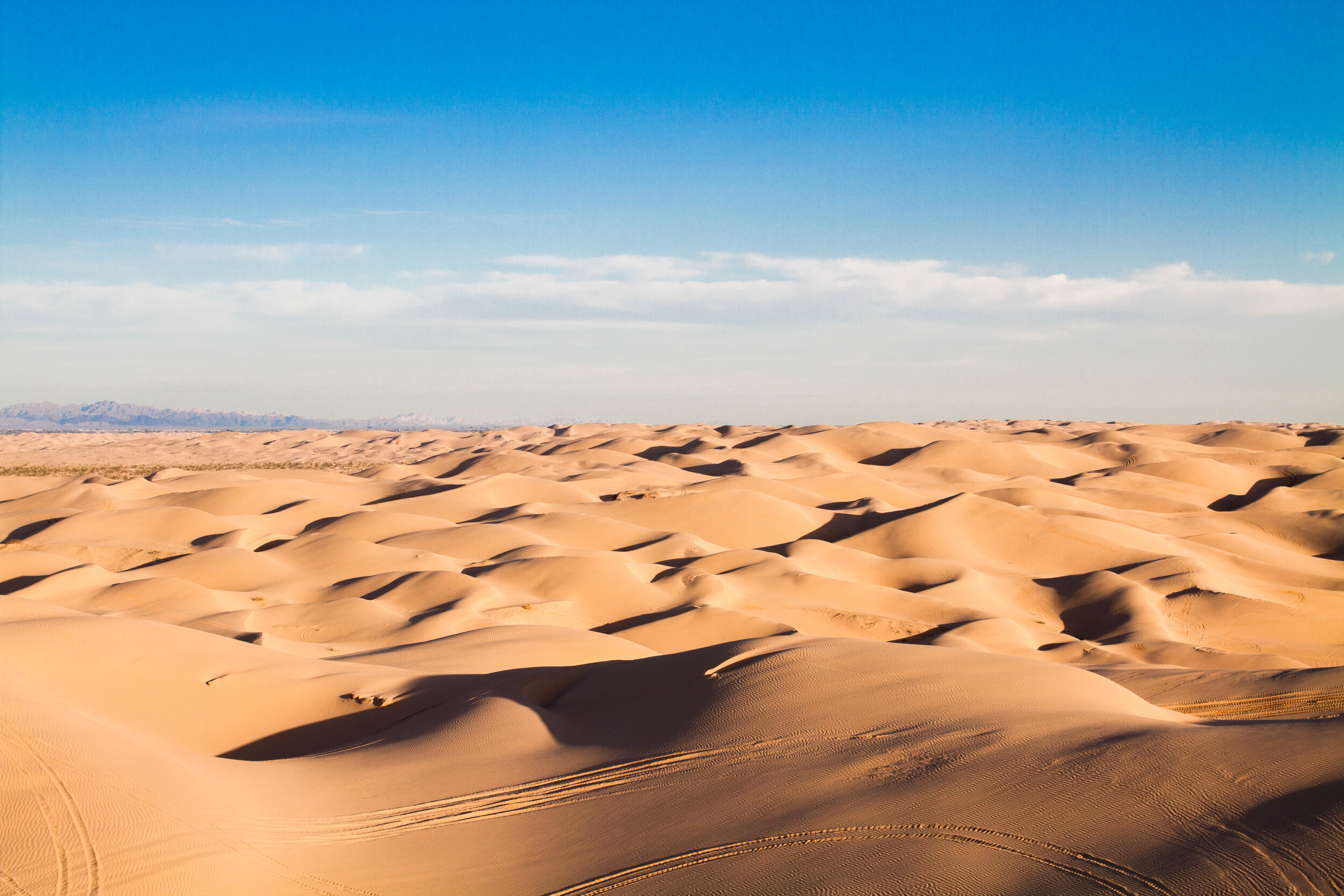NINE DAYS ON THE U.S. AND MEXICO BORDER
In early 2017, Yonathan & Jordan Moya took a 9-day photographic journey along the U.S. and Mexico border. Their journey was close to 2,000 miles and took them through the southern border states of Texas, New Mexico, Arizona & California. The Moya brothers grew up on the border, but have lived in the Midwest for most of their adult life. Even though they grew up on the border, they realized they didn't know everything about it.
“As much as we wanted to share about the border with others, we also wanted to learn more for ourselves.”
The purpose of their trip was to gain and share a fuller perspective on what life on the border is really like. They had no agenda - only to document life on the border and learn by listening to the perspectives of the people who live there. As they took part in different dialogues, they embraced a fuller understanding of the place they call home.
*Since the original border journey, this photo exhibit has been updated with photos and stories that reflect the peacemaking work Border Perspective is doing on the South Texas and Mexico border.
MILE 25
Brownsville, Texas
↓
+ Secure Fence Act
The Secure Fence Act of 2006, is an act of the United States Congress which authorized and partially funded the construction of 700 miles (1,125 km) of fencing along the Mexican border.
The Act was signed into law on October 26, 2006, by U.S. President George W. Bush, who stated at the time that the Act would "help protect the American people", would "make our borders more secure", and was "an important step toward immigration reform".
In some places, the border fence is your backyard. Parts of the fence cut through personal property, a golf course and in some places, the border fence is less than a 1⁄4 of a mile from several schools and neighborhoods.
When Jesus saw the crowds, he had compassion on them, because they were harassed and helpless, like sheep without a shepherd. Then he said to his disciples, “The harvest is plentiful but the workers are few. Ask the Lord of the harvest, therefore, to send out workers into his harvest field.”
— Matthew 9:36-38
When Jesus saw the crowds, he had compassion on them, because they were harassed and helpless, like sheep without a shepherd. Then he said to his disciples, “The harvest is plentiful but the workers are few. Ask the Lord of the harvest, therefore, to send out workers into his harvest field.” — Matthew 9:36-38
MILE 30
Matamoros, Tamaulipas
↓
WHO ARE ASYLUM SEEKERS?
WHO ARE ASYLUM SEEKERS?
An asylum seeker is an individual who leaves their country of residence, enters another country, and applies for asylum in this other country. An asylum seeker is an immigrant who has been forcibly displaced and might have fled their home country because of war or other factors harming them or their family. Understanding why asylum-seeking families flee will help you understand their stories and our work in South Texas.
+ MIGRANT PROTECTION PROTOCOL
Our local team visits the largest migrant camp on the border once a week. This make-shift camp is a direct impact of MPP, "Remain in Mexico" policy implemented in 2019 to stop the flow of migrants coming to seek asylum in the United States.
In October of last year, there were only a few hundred people. As of early 2020, there are about 2,500 displaced migrants living in this camp. The living conditions are inhumane. There is no sanitation. People are cooking on mud stoves, bathing and washing in the Rio Grande River.
People’s only hope is to wait for their court date, meet with an immigration judge and plead their case for asylum. It's hard to even fathom how the local church can support those currently living here. We are doing what we can by continuing to provide tangible and spiritual support.
There are currently over a dozen nations represented at the migrant camp in Matamoros, Mexico.
Over 57,000+ migrants currently wait on the U.S. and Mexico border becuase of this policy.
96% without legal representation.
600+ children under 5 years old living in squalid camps.
816 reported cases of murder, torture, rape, kidnapping & violence, plus, hundreds more unreported.
How we respond is critical.
MILE 65
Alamo, Texas
↓
+ Mariachi Music
Mariachi is a musical expression that dates back to at least 18th century Western Mexico.
Today, Mariachi music is taught at local schools in border towns all over South Texas. Mariachi's are even invited to play live at birthday parties, quinceañeras, church events and other important celebrations.
MILE 70
San Juan, Texas
↓
+ San Juan, Texas
While in San Juan, Texas we came upon a group of about 100 marchers. It wasn’t a protest march but yet a 40th anniversary of Texas Farmworkers March for Human Rights celebration.
Back in 1977, Antonio Orendain led the Texas Farmworkers Human Rights March from San Juan, Texas to Washington D.C. They walked over 1,600 miles to draw attention to the plight of Texas farm workers and the right to work laws that hindered their work.
“The only thing that we are asking is that the farm worker be recognized, (that) he put the price on the sweat of his work, just as, for example, the gas stations put a price on gasoline or the bakeries put a price on their bread,” Orendain said in a 1974 radio interview with KMUL in Muleshoe, Texas.
The march from South Texas to D.C. began with a group of about 40 farmworkers who walked about 20 miles per day, staying in public parks and church halls along the way. The march gained support and grew to about 10,000 when they arrived to the nation’s capital where they planned to meet with President Jimmy Carter. After all that walking and the support, President Carter refused to meet with them.
Farm workers in the Rio Grande Valley continue their fight for immigrant and farm worker human rights till this day.
Therefore go and make disciples of all nations, baptizing them in the name of the Father and of the Son and of the Holy Spirit. — Matthew 28:19
Therefore go and make disciples of all nations, baptizing them in the name of the Father and of the Son and of the Holy Spirit. — Matthew 28:19
MILE 73
Pharr, Texas
↓
+ EMISSARIES AT THE BORDER
For most people the border is only a holding zone, a stopping point, a place of poverty where the threat of violence hangs in the air like smoke. For the Moyas, it is home. Because they rooted their lives there, they are uniquely positioned to care for immigrants and carry God’s love to displaced people. For twenty-five years they have ministered to immigrant families on the border of South Texas and Mexico.
Hugo and Eunice Moya lead Iglesia Misionera Cristo Vive, a house church founded by immigrants for immigrants in South Texas. Iglesia Misionera Cristo Vive is located minutes away from the Reynosa and McAllen border crossing, the U.S. Border Patrol’s busiest station for apprehending and detaining migrants suspected of entering the country illegally. For over two decades they have persisted in the slow and unrecognized work of church building, advocacy, and hospitality. As the number of migrant detainees at the border grows, the Moyas continue their work of ministering to immigrants—this time on the front lines.
MILE 80
Hidalgo, Texas
↓
This shoe exchange was experienced by Marciana Heemstra on a Border Perspective trip at the Catholic Charities Humanitarian Respite Center in South Texas. The boy’s history is a compilation of stories our team gleaned throughout our border journey, plus bit of research.
+ ZAPATOS
He is puzzled, why is his mother packing clothes and food? Why is she selling family stuff and hiding the money in her zapatos (shoes)? His dad has not been home for a long time, something about coffee leaf disease on the farm. Mama grabs his hand and they walk. The house disappears behind them. The roads become unfamiliar. They walk and walk.
Mama is very quiet except in hushed conversations with other people who are walking. The boy hears the words “Mexico”, and “America”. They walk on and on, day after day. The boy feels a change in this mother, a fear in the group of travelers as they hurry through a stretch of land called Guatemala. Some of them break away and jump on the fast trains. Mama chooses to stay on foot, to keep him safe. He stays silent, somehow knowing that silence is the best way he can help mama.
The walking never ends. The fear takes residence his bones. One night a group of men come into their camp and take the girls away. They demand money, a lot of money, if the families want their children back. Frantic, the parents count their hidden stores of pesos. Frantic, they borrow phones to call family back home or far away in America to beg for ransom money. Mama takes his hand and they slip away in the night, moving ever forward.
Weary, mama makes a hard choice. Handing over a small bundle of money she secures a bus ride in Mexico. The space is tight with people, it smells of all things dirty. But it feels good to sit. The boy falls into a deep sleep, the vibrations of the bus soothing his aching muscles. “Take off your shoes, empty your pockets! Rápido, rápido! Give us 500 pesos or we will report you.” The boy jolts awake, his mother pleading with the Mexican agents to let the boy keep his zapatos. She hands over what they have, money, clothing, and her zapatos.
The boy has lost track of time, months have gone by, all is a blur until one day they stop at a large camp of travelers. This camp seems different, like people have been here a long time. Clothes hang on lines, drying in the sun. Chairs sit in groups under the shade of trees. There is a buzz of conversation, a sharing of knowledge and something else... a thread of anticipation.
The boy joins the happy play of children. He learns the pattern of meals and clean water brought to the camp twice per day by people whose words he cannot understand. He bathes on the edge of a wide, brown river. Mama points to the land on the other side, “That is America.”
The boy is happy, only vaguely aware that only about 5 families per day are invited to America, passing through the big fence, giant and rusty. More weeks go by until one day mama takes his clothes and gives them an extra good washing. She combs his hair. “It’s our turn now.” They hold hands as she speaks to one American after another in small rooms, showing documents, answering questions, describing the drought and famine in their homeland. Finally, they too get to pass through the giant, rusty fence.
That night he shivers in a cold cell of a large, brick building, sitting on the floor with many travelers. They call this place a Detention Center and “the ice box”. People sit shoulder to shoulder, knees against backs. He sits here for days. It is so cold. Why does cold air pump through the vents in the ceiling? Do Americans like to be cold? He doesn’t like the taste of the crackers and cheese in the little packages. Is this what Americans eat? He misses home. He misses papa.
Another meeting with another official, this one makes mama happy. She squeezes him tight. At last, at long last, they have permission to stay America! Mama promises to attend a court date sometime in the future. They board a bus, a clean bus, for a short journey to a building where they are welcomed and people have kind eyes. They help mama make a phone call to a relative in Seattle, their sponsor. They help mama get airplane tickets. There are many rooms in this building, some for sleeping, some for food, some are full of clothing. Everything smells different. Like flowers almost. Sweet. Is this how America smells?
The boy stands with his mother in a line to get new clothes. He is good at waiting quietly. Leaning on the smooth grey wall he absent-mindedly picks at the paint. It falls from his fingernails in satisfying flakes. Bit by bit they move their way forward until they are next in line for the sweet smelling room full of clothes.
PRESENT DAY AT A REFUGE CENTER ON THE SOUTH TEXAS BORDER
I open the door and motion the next family inside, a mother and her son. I size up the child, perhaps six? Rapidly pulling together clean underwear, a pair of socks, a t-shirt and jeans, I hand them to his mother with a smile. “Zapatos?” she asks, nodding toward the small shelf of donated children’s shoes. “Yes,” I answer as I kneel down and unlace this boy’s dusty brown leather shoes. They are sturdy little shoes, but so very tight on his feet. One by one we try shoes from the boy’s shelf, they are all too small. I swallow back emotion, so disappointed that I cannot fulfill this one basic need. I look into his eyes trying to convey my sadness, wondering if we need to squeeze his feet back into his traveling shoes. His eyes meet mine with a twinkle. Grinning, he points to another shelf, the girl’s shoe shelf, to a bright white pair of sneakers with silver sequins. They fit perfectly! The frenzied pace of the children’s clothing room stops for a brief second as we all - mother, child, fellow volunteers and I - clap and rejoice.
I can no longer hold back the tears as I quietly tuck his dusty, brown leather traveling shoes into a black Hefty trash bag to be thrown away.
Their purpose has been fulfilled.
MILE 86
McAllen, Texas
↓
This interaction was experienced by Marciana Heemstra on a Border Perspective trip at the Catholic Charities Humanitarian Refuge Center in McAllen, TX.
+ WHITE FLAKES
A new group of immigrants enters The Refuge, a first responder charity for those released from the nearby detention facility. Lining up in the hallway they await their turn for a shower, a meal, clean clothes.
Rachel (staff) and I sweep the hallway in their wake, “Take note of the mess on the floor after the lines are gone.” I assume she means the dust and dirt tracked in on foreign feet. But as our pile of sweepings grows I start to notice white flakes, like snow. It puzzles me. Rachel lifts the broom to the top side of the railing and pushes out even more of these white flakes, so much more! What is this? I push them into the dustpan, curiosity bubbling up only to be crushed by the sheer amount of other work to be done, clothes to be sorted, toiletry bags to be made. Eventually the story of the flakes begins to take shape.
In the stress and tension, immigrant children and adults start picking at the paint on the wall as they wait in yet another line, minds worried, bodies exhausted, hearts hoping. The paint is chipped away bit by bit, fingernail by fingernail, as the days go by and new guests funnel through.
Can’t we all relate to this unconscious form of stress relief? Some of us are nail biters or nail-polish scrapers. I am a lip chewer, pinching my bottom lip between my teeth, working off little bits of skin down to a place of painful tenderness. This simple understanding of shared humanity cuts me to the core.
I see the word “PAPA” etched into the dirty wall about 3 feet high (see on the photo above for yourself). Likely a child. Missing a father who stayed behind? Hoping to reunite with one who came ahead?
I bite my lip in a vain attempt to hold back tears and continue to sweep.
MILE 843
El Paso, Texas
↓
+ La Biblia es la verdad
Overlooking El Paso, Texas and Ciudad Juárez, Mexico is a very visible message painted unto the mountainside that reads "LA BIBLIA ES LA VERDAD, LEELA", which translates to "THE BIBLE IS THE TRUTH, READ IT.
Gerardo Bermudez, an evangelical pastor whose idea it was to paint the phrase on the mountain says he organized the project in 1987 after attending a meeting of ministers who wanted to do something to show the unity of evangelical Christians in Juarez. Bermudez never asked the city for permission to paint on the mountainside, and no one ever demanded he get a permit.
Juarez city spokesman Javier de Anda Martinez says he can't recall any objections to the display. "We respect freedom of expression," de Anda says. "We don't see anything wrong with that message, and I think it can be a positive one." He said the mountain, Cerro Bola, is city property and that Bermudez did not have to get a permit.
Wether you live on the Mexican or U.S. side of these border towns, there's no way you can miss this message.
MILE 947
Hachita, New Mexico
↓
+ New Mexico Ghost Town
Intrigued by an old abandoned church about 30 miles from the Mexican border, is how we ended up driving through Hachita, New Mexico. In 1916, Hachita served as a base for U.S. forces during the hunt for Pancho Villa and his men in northern Mexico.
The town benefited from military revenue until Camp Shannon closed in 1922. At its peak, Hachita had over 750 residents. After 1934, when several main railroads slowly discontinued their services and the last train passed through town in 1961, life in Hachita started to drastically change.
Today, Hachita is still home to less than 50 residents. Though Hachita shows some life, it has begun to crumble in the New Mexico desert. There was definitely an eerie feeling as we drove through the historic and very intriguing scenes of this New Mexico ghost town.
MILE 1,188
Douglas, Arizona
↓
+ Tethered Aerostat Radar System
Border Patrol’s eyes in the sky stretch over the southern U.S. border at 10,000 feet in the air. Eight special blimps that are part of the Tethered Aerostat Radar System, or TARS, watch over the southern U.S. border. Aerostats are held in the air by helium and are designed to filter out ground clutter and detect “low-level targets,” from low-flying aircraft to speedboats, and have a published detection radius of 200 miles.
According to CBP.gov, early in 2014, TARS detected an aircraft flying south of Nogales in Sonora, Mexico, heading north toward the U.S. border. The plane crossed into the U.S. over Nogales, Arizona, still heading north at low level.
The Border Patrol confirmed the target as an ultralight that went on to make an airdrop north of Nogales. Again through TARS radar, AMOC picked up the plane flying south and tracked it until it disappeared from radar in Mexico. Border Patrol agents seized seven bundles of marijuana weighing 159.75 pounds and an abandoned all-terrain vehicle.
Each TARS fully-outfitted aerostat costs the U.S. government $8.9 million.
I was hungry and you gave me food, I was thirsty and you gave me drink, I was a stranger and you welcomed me. —Matthew 25:35
I was hungry and you gave me food, I was thirsty and you gave me drink, I was a stranger and you welcomed me. —Matthew 25:35
MILE 1,215
Nogales, Arizona
↓
+ EL Comedor
In Nogales, Arizona we met Peg Bowden, a retired nurse who lives about 12 miles from the Mexican border. With the immigration crisis so close to home, Peg constantly finds herself in the murky, confusing and confounding world of the migrant.
Presently, she volunteers at ‘El Comedor’ a migrant shelter in Nogales, Mexico where a Samaritan group she’s a part of, provides clothing, medical supplies and counsel to migrants seeking the American Dream. Peg is also the author of ‘A Land of Hard Edges: Serving the Front Lines of the Border’, a series of true stories and personal reflections of the migrants she meets every week at El Comedor.
In her book, she investigates why thousands of people are willing to risk their lives crossing the Sonoran Desert into the U.S. and tries to understand the complexities of human migration and the power of love and family that drives people into the treacherous landscapes of the southern Arizona border.
We were able to spend an entire day with Peg. She took us across the border into Nogales, Mexico and showed us a glimpse into her world and what it means to come face to face with the real issues people living on the border deal with every single day.
MILE 1,220
Nogales, Sonora (Mexico)
↓
+ Enrique
We met Enrique at “El Comedor” at about 11AM, he had just been deported into Nogales, Mexico at 7AM. Enrique shared with us that he spent 11 years in prison for a crime he committed while living in the USA.
Having a criminal record was the cause of his deportation into Mexico and the withdrawal of his green card. Enrique didn’t go into detail about the crime he committed but did mention that his actions had consequences and that he was paying for what he did. “Criminals like me, have to deal with the consequences of (the) bad decisions we make. Unfortunately, it’s because of people like me, that a lot of the hard working immigrants, even those who just want to provide for their families, get labeled as criminals”.
We could tell that Enrique felt convicted about his current situation and that he saw himself as part of the immigration problem that’s currently affecting many people in our country. Internally, Enrique was dealing with the remorse of why he got deported to this unknown place in the Sonora desert, where he now, somehow, has to find a way to start over.
MILE 1,773
Tijuana, Baja California (Mexico)
↓
+ Algodones dunes
As we drove into California, we came upon the Algodones dunes. The Algodones Dunes are a large sand dune field located in the southeastern poron of California, near the border with Arizona and the Mexican state of Baja California. The field is approximately 45 miles long by 6 miles wide and extends along a northwest-southeast line that correlates to the prevailing northerly and westerly wind directions.
For decades, these dunes were virtually unchanged. But in 2008, as the Bush administration raced to fulfill a pledge to erect 670 miles of fencing and vehicle barriers on the border, they were transformed almost overnight.
A fence now slices through the Imperial Sand Dunes, preventing recreational riders from veering into Mexican sands. Before, drug smugglers easily blended in with riders to reach Interstate 8, less than a half-mile from the border at one point. At sunset, these dunes give us a magnificent view of Southern California but also point to an eye-opening view of how these dunes are divided between Mexico and the U.S.
PINKIE KISS
At friendship park in Tijuana, families separated by the border wall can't share hugs when they meet. Instead, with a fence between them, they share the only physical touch possible: a pinkie kiss.
“Teacher, which is the greatest commandment in the Law?” Jesus replied: “‘Love the Lord your God with all your heart and with all your soul and with all your mind.’ This is the first and greatest commandment. And the second is like it: ‘Love your neighbor as yourself.’ — Matthew 22:36-39
“Teacher, which is the greatest commandment in the Law?” Jesus replied: “‘Love the Lord your God with all your heart and with all your soul and with all your mind.’ This is the first and greatest commandment. And the second is like it: ‘Love your neighbor as yourself.’ — Matthew 22:36-39
learn Something new?
Leave your thoughts in the comments!





